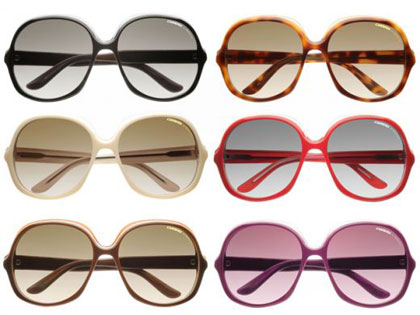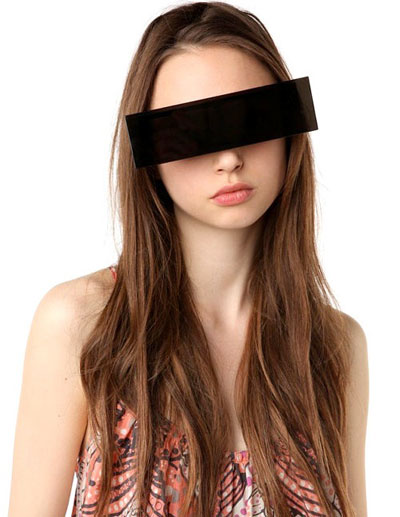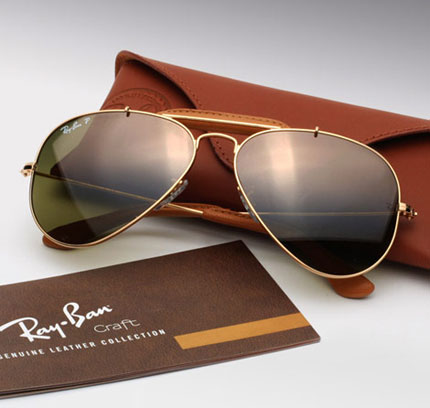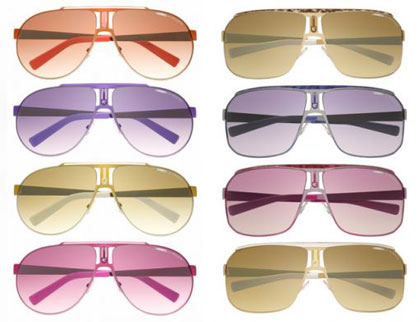Wearing sunglasses not only looks great, but it also protects eyes. After all, our eyes may be damaged by the sun, as well as the skin. Unfortunately, we can not protect our eyes with the sunscreen. The only possible protection is to wear sunglasses with a UV filter.

Are Sunglasses Important?
Eyes that are regularly exposed to the too bright sun are subject to various diseases. Ophthalmologists recommend wearing sunglasses with a UV filter, when you are in the sun long enough. You need to wear sunglasses in order to avoid age-related eye diseases, especially cataracts (clouding of the lens inside the eye), and photokeratitis (sunburn of the cornea, the surface of the eyeball). Too intense sun rays can also cause yellowing of the parts of eye whites.
To save the eyes from UV rays, it is better to wear big sunglasses because they no longer protect the eyes and do not let the light enter the eye lens from the sides. Big sunglasses also help protect the eyes from wind, sand, dirt and pollen, which is sometimes carried by the wind.
Sunglasses protect the delicate skin around the eyes from premature signs of aging because of UV rays.
Choose Only Quality Sunglasses
Make sure you buy the glasses that do protect from UV rays. The lenses in most inexpensive sunglasses, especially bought from a street vendor, do not provide sufficient protection from UV rays.

Eye Protection from UV
Below are some of the features and functions of sunglasses often indicated by well-known manufacturers. A simple customer does not always find it easy to understand these features.
Sunglasses Blocking 99% -100% Ultraviolet Rays
Be sure to always buy sunglasses with this feature. Both plastic and glass lenses absorb some UV radiation, but the UV absorption by a lens may be improved by adding chemicals to the lens material during manufacturing or by applying special lens coatings.

Sunglasses Protecting from Infrared Rays
Infrared waves are invisible and produce heat. The sunlight has a low level of infrared rays. Some manufacturers produce sunglasses with infrared protection, but the studies have not shown a close link between the diseases of the eye and infrared rays.
Polarized Sunglasses Reduce Reflected Glare
Polarized lenses reduce the glare of sunlight that is reflected from a smooth surface. It is useful when driving, for example. Polarization has nothing to do with UV light absorption, but many polarized lenses are being packed together with UV-blocking agents. Check the label to make sure that the lenses offer maximum UV protection.

Mirrored Lens Sunglasses
Mirror cover is a type of lens coating with the help of thin layers of metal. While these lenses reduce the amount of visible light entering the eye, do not think that they thereby fully protect you from UV radiation.
Photochromic Lens Sunglasses
The glass of such lenses automatically darkens in bright light and becomes lighter in low light conditions. Darkening occurs in about 30 seconds, while the lightening process takes about five minutes.
Darkening Level
Medium-dark lens is good to wear every day, but if you use sunglasses for very bright conditions, choose dark lenses. The ability to block the UV rays is not dependent on the color and the degree of darkening.

Which Lens Color Is Better?
Lens color is a personal choice and does not affect how well the sunglasses lens protects your eyes from ultraviolet radiation. Gray and brown are more popular because they do not distort color perception.
Color Lens Sunglasses
Athletes often prefer other colors for contrast. For example, yellow lenses are popular with skiers and target shooters, because they are good in low light conditions, reduce haze and increase contrast to have a better vision.
Bright lenses (reddish, pink, purple, etc.) tire your eyes faster.










